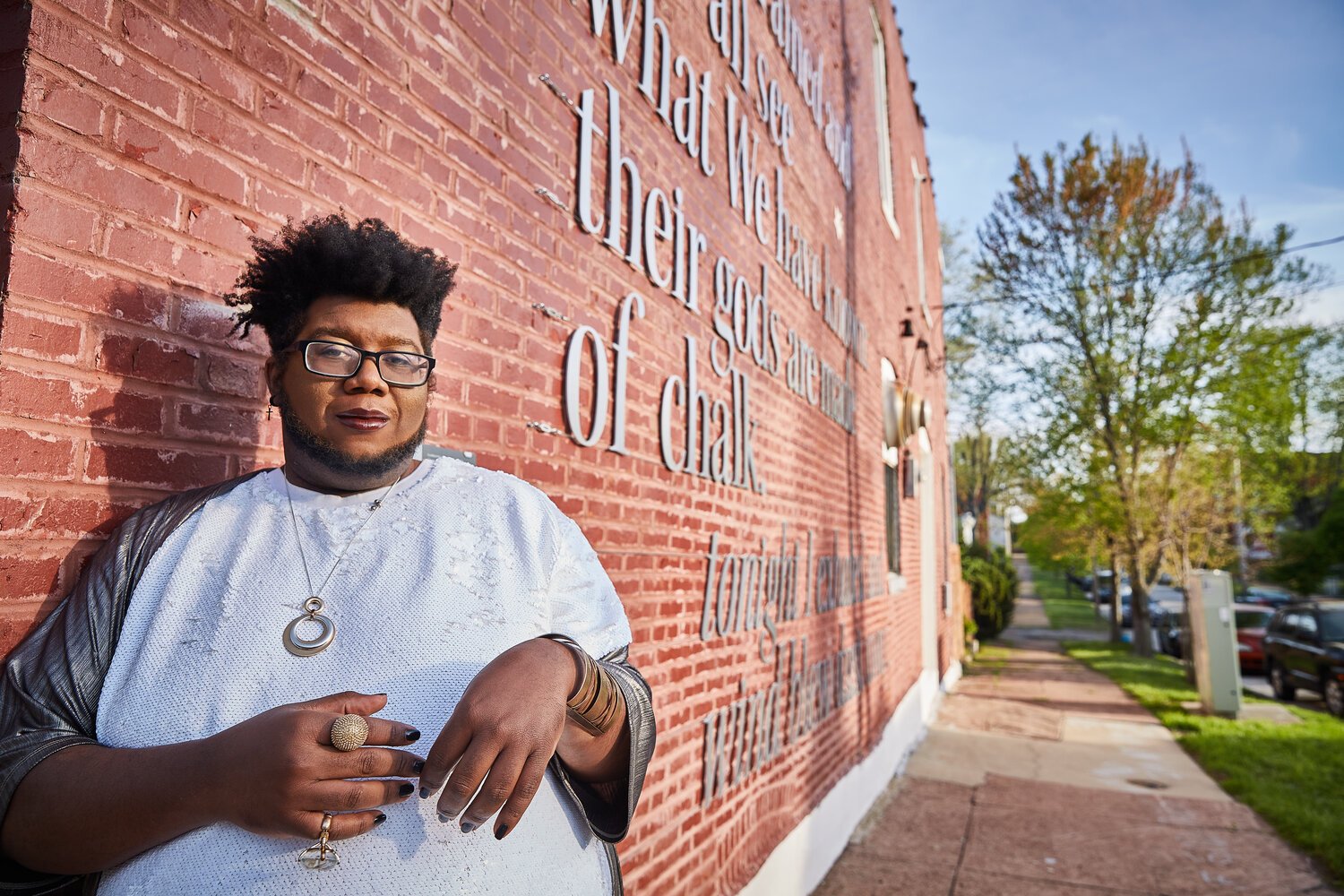This is a Public Service Announcement
If you were to issue a public service announcement, what is it that you feel is so urgent to say? What is it important for your community to hear?
Public service announcements are usually on the airwaves. They are urgent, convey a warning, and detail steps for social correction. They aim to be messages for the good of the public. But good doesn't always mean the same thing for everyone.
Jessie Donovan
When people write about St. Louis, the descriptions will often begin with the thirty thousand vacant homes and then frame the current landscape through a lens of loss. It is not inaccurate, but it feels flattening. You feel the cursory glance, not the attempt to look again, to see that so much more exists.
But where one sees thousands of poorly maintained homes, an absence of life, another might see artifacts to be preserved. On the broadside of the burgundy buildings—homes, churches, schools—are messages that others have already left. Many are now faded and barely visible, but even long-shuttered businesses still have signs in beautiful typography, hand painted with detail and care.
Now ghosts of St. Louis’ former self, these signs are a quiet reminder of what was once the nation’s fourth largest city. It feels important to pay homage to this visual tradition of making the city’s walls speak.
Kiki Salem
Billboards are typically used for commercial purposes, and placed in high-traffic areas to spread the word about the presence and use of the business. As an artifact, the presence and size of the faded billboards signal that there was an audience large enough that billboards were an effective messaging system.
All of the painted signs around St. Louis are from small businesses that are no longer, but their slogans and signs remain and inspire PSA:. It felt important for each project to be in a communication style that St. Louisans recognized and were familiar with. All the signs along Gravois, on the way to Granite City, feel so personal. But it is not just the faded billboards that inspire our typography. The materials of the church marquees, the graffiti, and the sculptural signs made of porcelainized neon, terra cotta, and cast iron—all unique to St. Louis—also served as inspiration for the design of the PSAs. All of our contributors are local artists, writers, and poets.
Joss Barton
The main location of PSA: is 2222 Chippewa, in a woodshop. The audience of most PSAs are neighbors who walk or drive by, through much quieter traffic than what we imagine St. Louis’s booming years were like. The building used to be a neighborhood church. Before that, it was a bar. At one point there was even a billboard on the roof. Over time, 2222 Chippewa became a multipurpose space.
PSA: is a temporary project, a blip on the building's timeline. But despite or maybe thanks to its ephemeral nature, PSA: gets to build on this multi-purpose history, even expanding it into the future. As we nod to the fading designs before they are gone forever, we bring the complicated loves, losses, and inspirations of our current lives into greater visibility.
Jacqui Germain
When so much of the narrative around life in St. Louis is written and shared by those in the suburbs, academia, or elsewhere, it felt necessary to us that messaging come directly from our communities—to St. Louis, to the neighborhoods, from our perspective. When it feels like we’re overlooked or others can’t see us, these words offer a way to reach new understandings.
Looking over the projects from our last three years, a common desire emerges. The language of PSA: projects point to invisibility and vision, a need to see and be seen differently.
See. See. See. See. Invisible. Invisible. Sea. Sea. Matter. Matter Matter. Matter. Life. Life. Exist. Exist. Exist. Joy. Joy. Love. Love. Love. Freedom.
Maurice L. Tracy
Much like a public service announcement, these words are urgent, declarative, and offer corrections. Similarly to the faded commercial billboards, our short messages seek efficacy, and to share a broader message through brevity and design. But our PSAs are also love letters. They are gifts of labor to the community, sharing that we see you, we care for you, and we want you to know how important you are. What could be more urgent?






